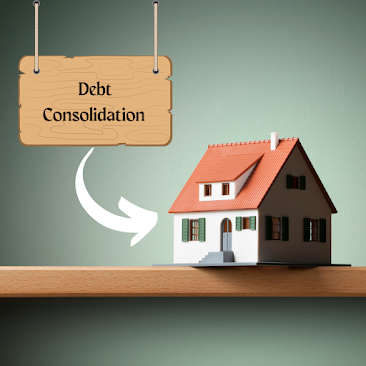⚠️Consolidating Debt Into Your Mortgage♻️
High levels of debt can significantly eat into monthly cash
flow which can take a toll on many households. Particularly those who are
living paycheque to paycheque.
Rising inflation is not making it any easier.
There may be ways to utilize the equity in your home to
significantly reduce your debt payments to increase your cash flow, which can
give you a bit more breathing room financially.
The average non-mortgage debt per Canadian consumer rose to
$21,183 in the third quarter of 2022 according to Equifax. Rising mortgage
rates has not made it any easier for people, particularly for those in variable
rate mortgages and those with mortgages coming up for renewal.
Inflation has been driving up the cost of just about everything, further
fueling consumer debt which is not making it any easier for many people.
Types of Consumer Debt
There are many different types of consumer debt, all with
varying interest rates, terms, payments, etc.:
Mortgages
HELOCs (Home Equity Line of Credit)
Car loans
Personal loans
Personal lines of credit
Student loans
Mortgages are often considered as ‘good debt’ as they are
what makes homeownership possible. Without them, everyone would just be
throwing their money away on rent. But other debt can create misery if it gets
out of control and can even lead to broken marriages. This is why cash flow is
so important as it can significantly reduce or even eliminate financial stress.
Increasing Your Cash Flow
It’s not always about moving debt to a lower interest rate.
For many struggling households, it’s about improving cash flow to provide a
release from the burden of higher monthly payments.
We’ll create a fictitious couple to illustrate and all too
common situation. Jim Bob and Michelle live in a modest home with their 19
kids. (Okay, maybe 19 is a bit much, but hope that at least made you smile).
They have an annual household income of $120,000 before taxes and have a variable
rate mortgage where the payments change with prime rate. When they bought
their home two years ago, their rate was only 1.45% which was easily manageable
as their monthly payment was only $1,815. Just like everyone else, they never
thought that the Bank of Canada would have increased their rate by
4.00% in 2022, bringing their rate up to 5.45% and increasing their monthly
payment to $2,885. Over $1,000 more than what it was originally.
Their increasing mortgage payment along with overall
inflation has resulted in rising debt which is starting to get out of control
considering their modest income:
Once they have paid their property taxes, groceries,
utilities, and other general expenses, they have virtually no money left over
at the end of the month.
If we were to refinance the above debt into a new fixed rate
mortgage at 4.99% then the new monthly payment structure would look like this
if we broke it down piece by piece:
Everything would of course be lumped into a single mortgage
and payment, but I’ve broken it down so you can see how each component is
affected individually. By refinancing their mortgage to consolidate
all their debt, they are increasing their monthly cash flow by $1,393 per month
and will no longer need to worry about living paycheque to paycheque.
But isn’t this just stretching out the debt over a longer
period?
Yes, it is, but this is more about increasing cash flow and
relieving financial stress than maximizing savings long term. If you stick with
the new payment structure for the next 30 years, then yes, you’re now
taking 30 years to pay off your car (for example).
But there is an alternative strategy.
If you can comfortably do so, then I suggest using
your prepayment privileges to increase your payment to match the debt
you are consolidating. In the above example, the $700 car loan was reduced by
$509. You can then increase your mortgage payment by $509 resulting in the
exact same car payment you were previously making. 100% of the payment increase
will go straight to your principal. The car loan portion of the mortgage would
then be paid off in less time than the original loan given the lower rate.
Conclusion
This strategy is based on refinancing your mortgage, but
there are other options for accessing your home’s equity without
having to break your mortgage.
There are many things to consider before we can determine if
consolidating your debt into your mortgage is right for you. Break
penalties, refinancing costs, rates, etc. Different people have
different financial goals.
For some people, maximizing cash flow is their number one
priority.
For others, it will be paying the least amount of interest
over time. Sure, you can say you want both, but you can’t have your cake and
eat it too. Going off track here for a second, I’ve always found that a funny
line… why would someone have cake and not want to eat it? Makes no sense. I
digress.
Consolidating debt into a mortgage can be the difference
between struggling financially or living comfortably without having to worry
about how you’re going to make your next mortgage payment. Every situation can
be a bit different, so it’s best to reach out to us directly so we can analyze
your specific situation for you in detail.




.png)




Comments
Post a Comment